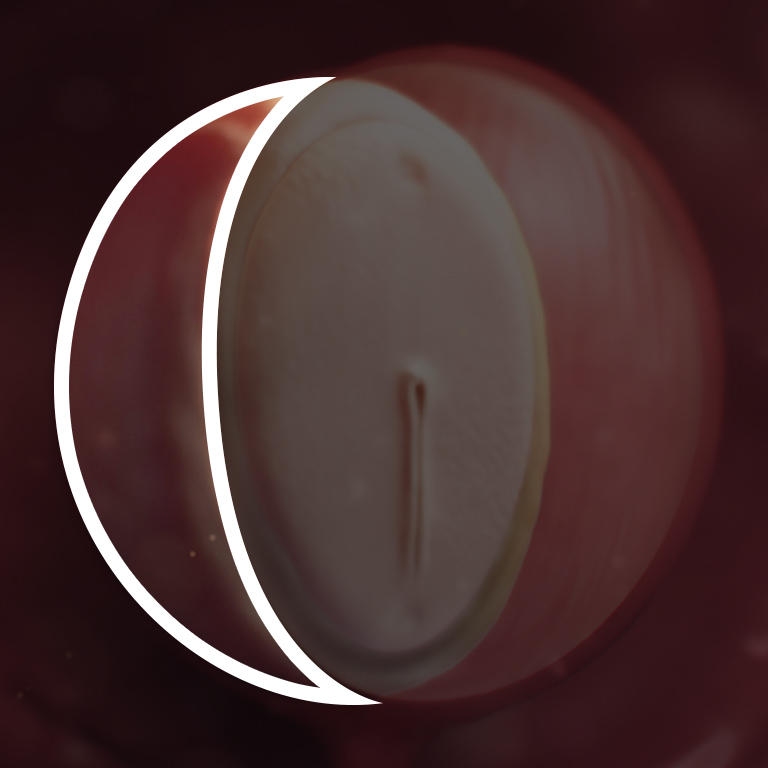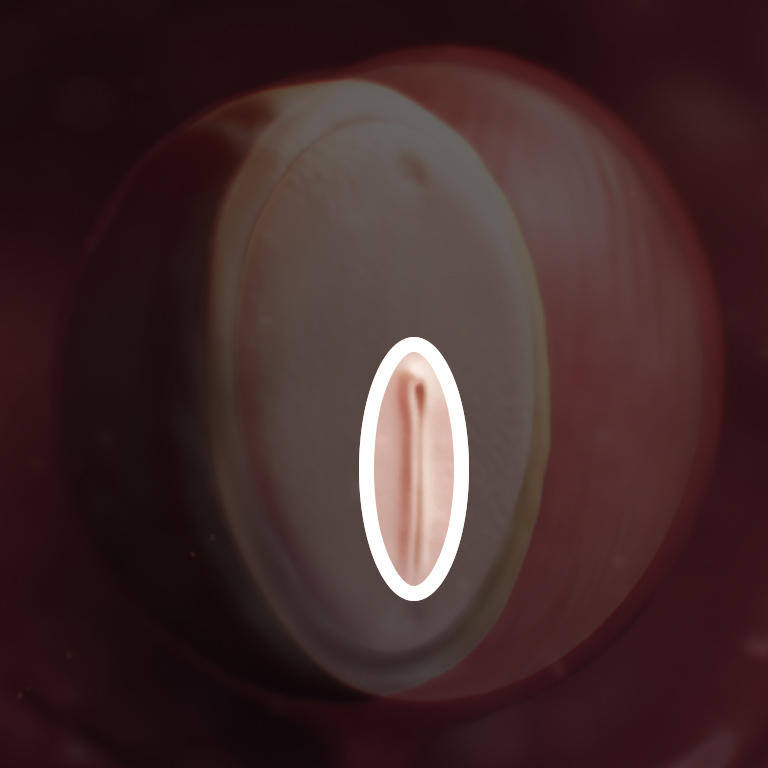There are two layers of developing cells in the embryo:
- The epiblast, which will go on to form your entire baby.
- The hypoblast, which is a temporary layer of cells that supports the embryo's growth, for example, by creating a yolk sac for nourishment.
(Bailey 2014a, Hill 2019, Moore et al 2019, NHS 2018a)
The embryo is already surrounded by an amniotic sac, which is filled with fluid to protect it (Artal-Mittelmark 2019, Bailey 2014a).
The placenta is in the early stages of development, and also has two layers. Some cells are tunnelling into the lining of your womb to provide an oxygen supply from your circulatory system to your baby (Artal-Mittelmark 2019, Moore et al 2019).
Meanwhile, other cells from the placenta are producing the hormone human chorionic gonadotrophin (hCG). This hormone sends the message to stop your periods (Bailey 2014a), and it's what gives you that big fat positive on your pregnancy test (Artal-Mittelmark 2019, Moore et al 2019).
By around week 10, the placenta will be established enough to supply your baby with the nutrients she requires, and she'll no longer need the yolk sac (Bailey 2014b, Moore et al 2019).
Between week 4 and week 10, all of your baby’s organs will begin to develop. Some will even begin to function (Artal-Mittelmark 2019).
Taking folic acid supplements during this important stage can help your baby's brain and nervous system to develop normally, preventing defects such as spina bifida (NHS 2018b).
Discover how pregnancy can affect your body and your life at week 4 of your pregnancy.
Note: every baby develops differently. This page is designed to give you a general idea of how an embryo grows in the womb.
References
Artal-Mittelmark R. 2019. Conception and prenatal development. Professional version. www.msdmanuals.com [Accessed October 2019]Bailey J. 2014a. Hormonal cycles: fertilization and early development. Chapter 5 in Marshal J and Raynor M. ed. Myles textbook for midwives. 16th ed. Edinburgh: Churchill Livingstone, 91-100
Bailey J. 2014b. The placenta. Chapter 6 in Marshal J and Raynor M. ed. Myles textbook for midwives. 16th ed. Edinburgh: Churchill Livingstone, 101-10
Hill MA. 2019. Embryology: week 2. University of New South Wales Embryology. embryology.med.unsw.edu.au [Accessed October 2019]
Moore KL, Persaud TVN, Torchia MG. 2019a. Second week of human development. Chapter 3 in The developing human: clinically oriented embryology. 11th edition. Elsevier
Moore KL, Persaud TVN, Torchia MG. 2019b. First week of human development. Chapter 2 in The developing human: clinically oriented embryology. 11th edition. Elsevier
NHS. 2018a. You and your baby at 0-8 weeks pregnant. NHS, Health A-Z, pregnancy and baby. www.nhs.uk [Accessed October 2019]
NHS. 2018b. You and your baby at 1 to 3 weeks pregnant. NHS, Health A-Z, pregnancy and baby. www.nhs.uk [Accessed October 2019]
















